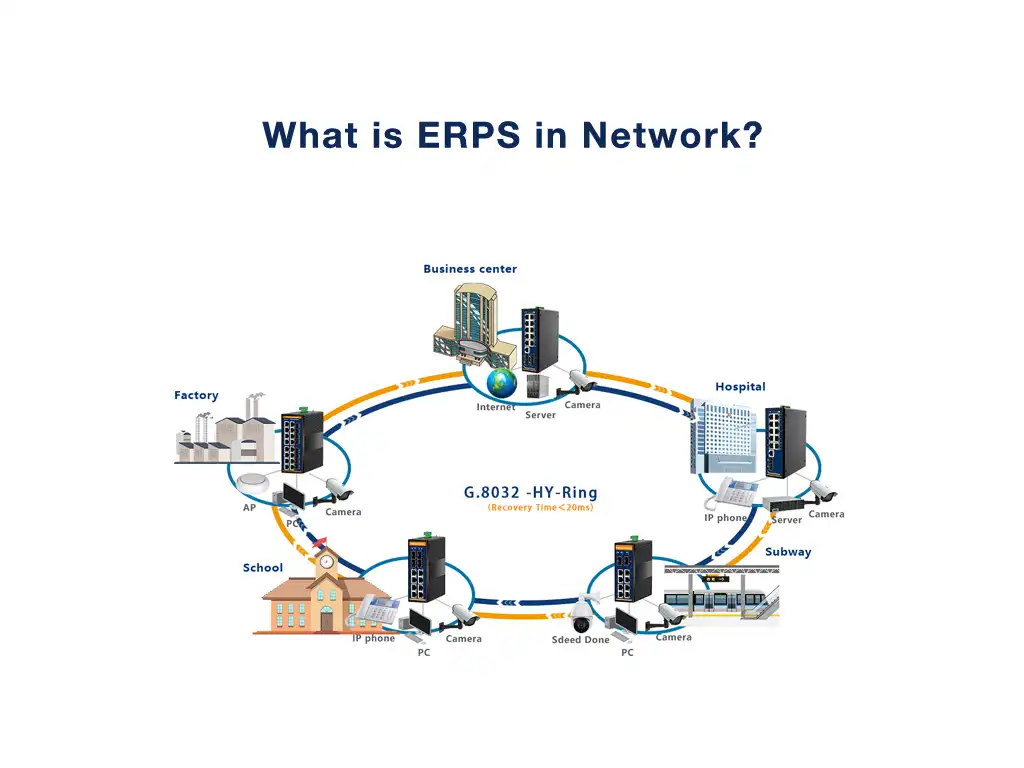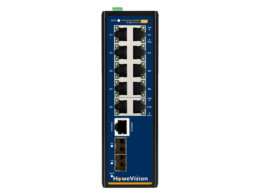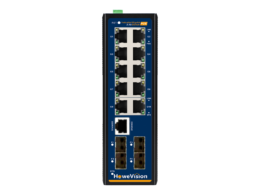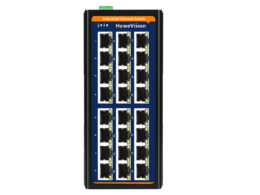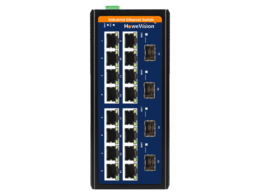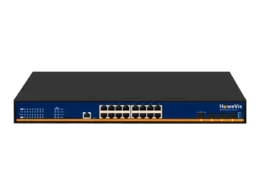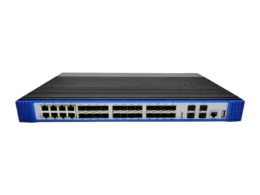A network is the connection of multiple devices.
Let’s try a real-life example to understand it.
Suppose you have a bike and want to drive it on the road. The road is, in actuality, the network, while the cycle is the device you wish to operate. So, what are protocols, then? These are traffic signals that allow and filter traffic.
Got my point?
Sometimes, traffic is higher, and different methods are used to handle it. Otherwise, what will happen?
The bottlenecks will increase and stop the network entirely. We have different methods to tackle the traffic. ERPS is one of those methods.
Let’s find out how it helps us manage our network traffic and makes it more efficient for the devices.
Suggested Reading: What is Industrial Ring ERPS Technology?
What is Ethernet Ring Protection Switching (ERPS)in the network?
ERPS is a networking technology that allows for high traffic—no more bottlenecks in the system.
Network traffic is a bigger problem. Redundant traffic can prevent the flow of data packets and might cause serious problems. So, we consider the ERPS in the network to handle all the traffic with high redundancy features and implement all the measures to control the traffic.
Ethernet ring protection switching ERPS can be efficient but difficult to understand. Let’s examine it in depth!
How does ERPS work?
Do you have an Ethernet system at your home? Great!
We will still have low requirements and traffic at home. However, we must implement better strategies to control all the traffic at the offices, industrial zones, and enterprise networks.
Ethernet Ring protection switching ERPS is the best option for connected devices over the Ethernet network. Its working standard is G.8032.
I have mentioned some points to determine how it works and deals with heavy traffic.
- In a network, there are multiple loops. ERPS prevents those loops.
- There is a Ring protection link node with an RPL owner. The RPL owner blocks the node when traffic normally flows through the network to prevent the looping.
- When the network fails, the RPL owner node opens the RPL node to let the traffic pass without compromising network traffic flow.
In simple words, the RPL owner node can recover traffic during a network failure and provide a proper route to data packets when a device is going for an upgrade or other such scenarios.
One question still arises in my mind.
What will happen when the network traffic recovers? What will the RPL owner node be doing in that case?
The RPL owner will block the RPL node again and let the traffic pass. Is that even problematic?
3 Benefits of ERPS
ERPS has many advantages for beginners and higher networks. We must thoroughly review each benefit to catch up with a picture of the working mechanism and its pros.
It prevents network failure.
Do you know one fact about the ERPS? It works in NETWORK TOPOLOGY layers.
That means it changes the network topology and provides stability. If one route fails, we have another way to enable traffic flow.
No NETWORK LATENCY! No more BOTTLENECKS!
Let me explain how it handles network failure.
The data packets flow through the different nodes in the network. It creates a circular or looping pattern. If a node fails, do you know what will happen? The whole network will stop.
And with network interruptions, you cannot do your job.
ERPS does this task.
It implements the Ring Protection Link node in the network. Usually, it blocks the node. In case of higher traffic or network failure, the RPL owner node opens the link or node for traffic.
The circuit for data packets is COMPLETE in either case.
So, no more NETWORK FAILURES will cause problems.
Traffic handling becomes more manageable.
Do you have higher traffic in the network? No problem!
ERPS can handle it EFFECTIVELY. It prevents the looping mechanism.
If a data packet circulates in the loop, it will never leave. So, ERPS prevents redundancy by blocking and opening the route when required.
Moreover, it does the job in milliseconds. 55 MILLISECONDS and boom! You don’t need to worry about network traffic any more.
Network upgradation becomes smooth.
For network upgradation, you have to enter the ring topology and bring up changes in the network. Sometimes, you have to leave one device from the network.
If you do that without implementing proper management, the circuit will break, leading to several problems. So, how could you do all that without affecting the network?
ERPS helps protect the ring network by changing the network topology with the help of RPL nodes. In this case, the ring network becomes more efficient and provides better performance.
5 Applications of ERPS
ERPS has countless applications. All thanks to its revolutionizing technology that protects the networks and advances the approach to ring topology for handling the correct application at the right time.
The revertive and non-revertive mechanisms prevent loops and maintain data packet flow.
Let’s check out different ERPS applications in other places.
Industrial Ethernet
Industrial Ethernet has many extreme conditions that make a standard Ethernet switch favorable.
Do you know why it is?
It is because of the harsh environmental conditions. In industrial zones, machines are running. Time synchronization and fluctuating conditions make choosing a standard Ethernet network hard. So we need Hardened switches.
Since multiple applications are essential in such places, the traffic will be higher. To control the traffic, we also need a better mechanism. And what else can it be except the ERPS?
Ethernet G.8032 standard controls the traffic, maintains it and contributes to better network facilities.
Surveillance Monitoring
Surveillance systems are another excellent example of ERPS networks.
Multiple IP CAMERAS are monitoring different applications. Due to the massive number of devices, the traffic is much higher. To control the flow, the system needs to maintain it.
ERPS helps with the job. It can decrease network latency, improve performance, and provide what your network needs.
In offices or industrial zones, you can find surveillance systems. Their networks contain the ERPS.
Power and utility monitoring industry
The power and utility industry also has networks. The Ethernet networks available at such places offer better facilities and services.
Power management and monitoring are crucial tasks. Ethernet and PoE technology provide the power and data connection for power consumption and device synchronization.
For network upgrades or stability, you might need the ERPS.
Waste Management industry
Waste management is another crucial task. Remember. Industrial waste is different from home waste. Waste treatment is another aspect of waste management.
On international levels, there have been efforts to minimize waste and improve environmental conditions ASAP!
Ethernet networks might be available at waste management centers.
Do you know why?
Because waste treatment requires operations of rotary kilns and thermal processes, these processes have special devices that handle the tasks.
It is essential to maintain the network to synchronize and provide the report. We do this by implementing Ethernet networks with different protocols. ERPS becomes helpful in that case.
Automated production facilities
There is one common scenario in automated production facilities. All production mechanisms are automatic. For example, in a Coca-Cola factory, the device handles multiple tasks simultaneously.
There are CO2 production machines, water production setups, drink manufacturing, and packing. All these occur at the exact moment without any assistance.
One question might arise.
How is it even possible?
It is because machines are synchronized, and one receives the command after the others. ERPS prevents synchronization breakage and improves its efficiency.
Final Words
Do you plan to implement ERPS technology? Undoubtedly, it is one of the best options for higher-traffic networks for better upgradation. Hundreds of applications use ERPS technology only for networking purposes. Single-ring, multi-ring, and such nodes offer a better solution to network latency. Moreover, 55-millisecond latency is not bad.
However, if you want to purchase Ethernet switches, ports, or PoE tools, contact HOWEVISION Professionals. We have years of experience and have dealt with many customers regarding PoE and relevant agencies. Call us right away to get a free quote for your project.

